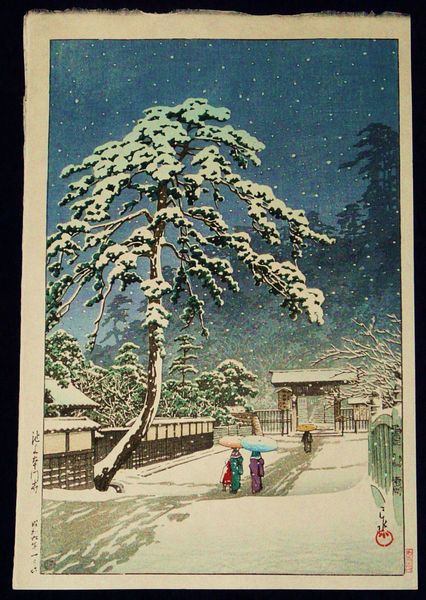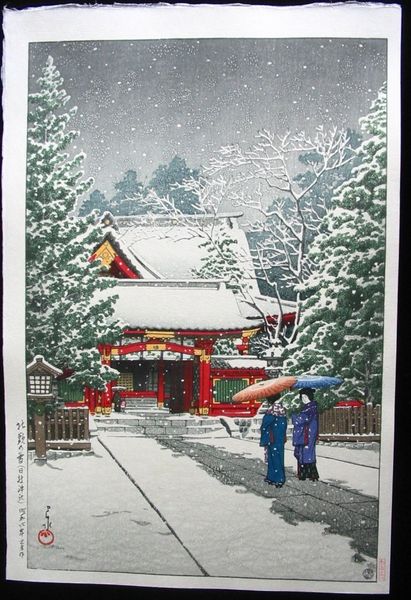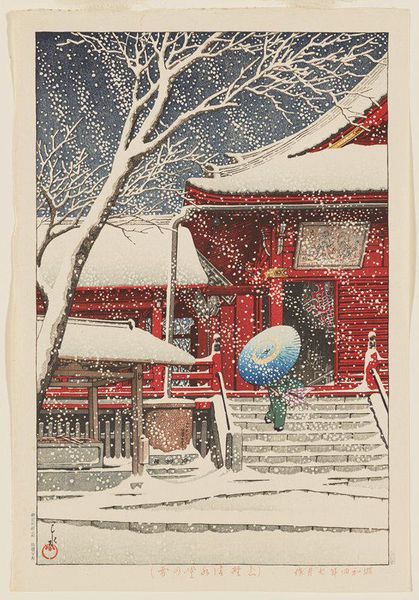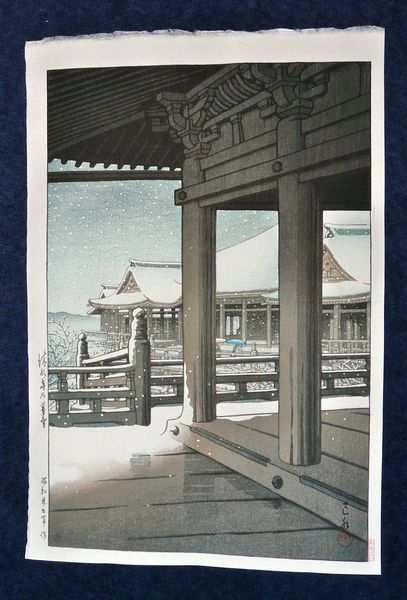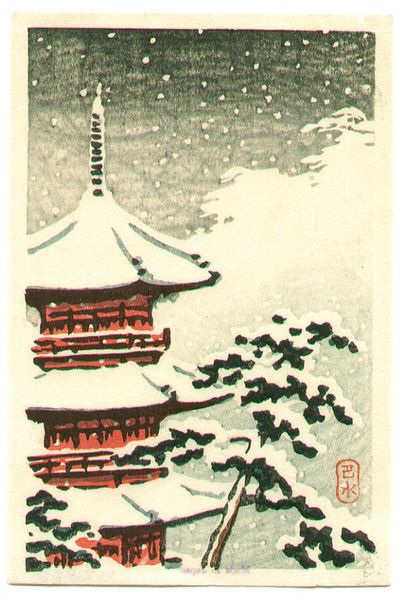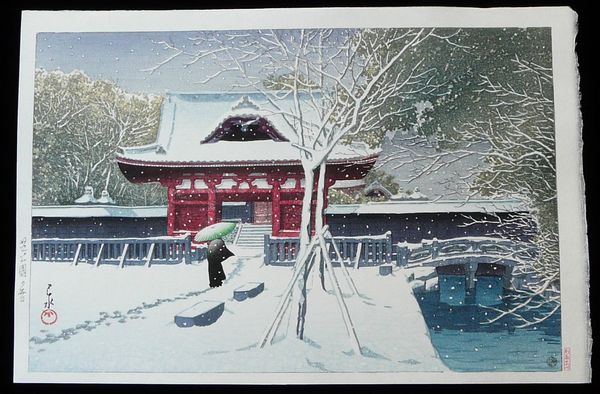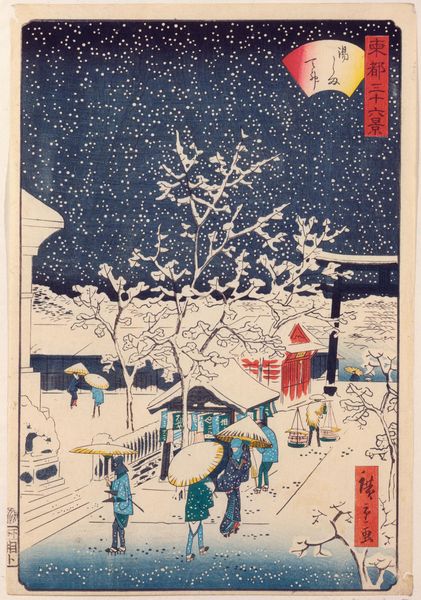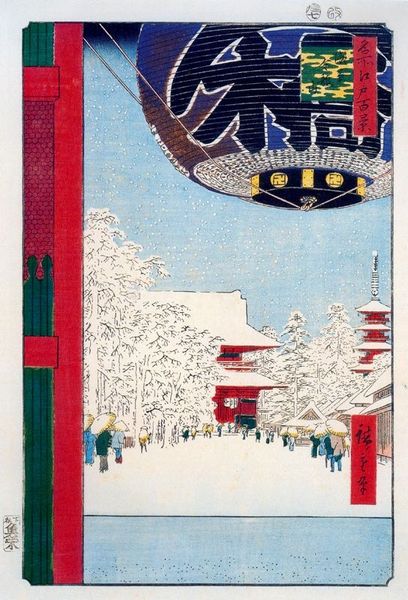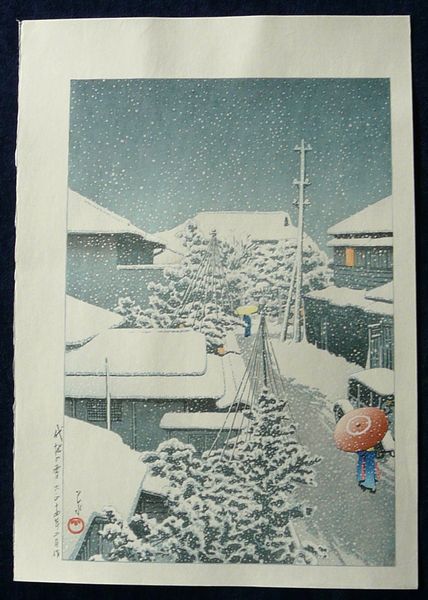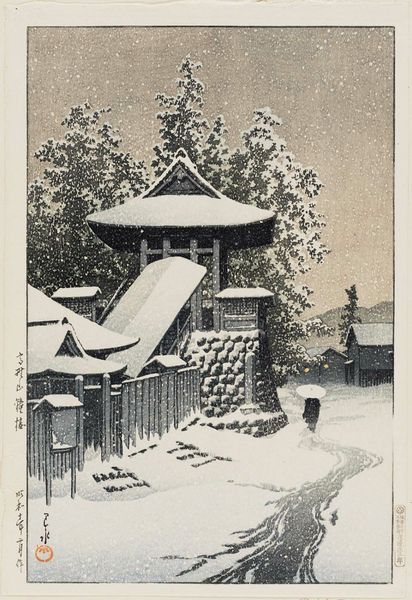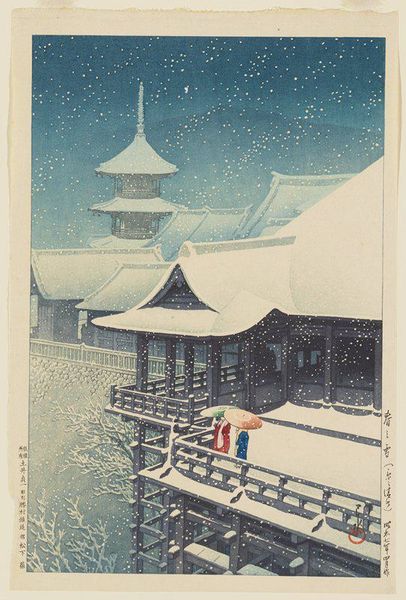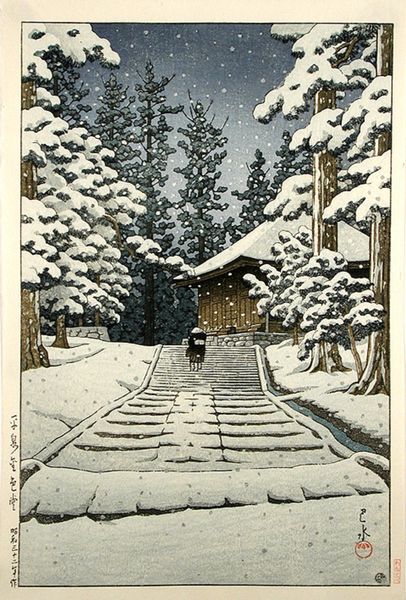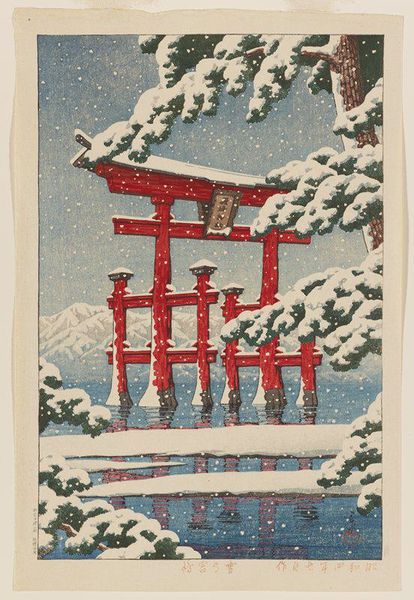
Copyright: Public domain Japan
Curator: Here we have Hasui Kawase's woodblock print, "Snow at Zoji Temple," created in 1939. A stunning example of Shin-Hanga, or "new prints." Editor: It’s utterly charming. The dominant reds against the heavy snow evoke such a strong sense of warmth amidst the cold. And those figures under the umbrella – so small, but they create such a powerful story. Curator: Indeed. Kawase revitalized traditional ukiyo-e techniques, blending them with Impressionistic sensibilities that reflected changing tastes and influences in early 20th-century Japan. His work offers insight into how Japanese identity was being shaped by global encounters. Editor: Look how the temple practically glows. In Shintō, red symbolizes vitality and protection. Does this winter scene suggest a desire for refuge? Perhaps reflecting unease surrounding the war? Curator: A compelling point. In a turbulent era, Kawase was documenting disappearing landscapes in an increasingly modernizing Japan. Ukiyo-e and its modern versions allowed people to retain some connection to places and moments which were slipping from memory. The preservation of such memory would resonate widely through all levels of society. Editor: Those small figures feel weighted down by something beyond the snow; their world changing fast. I find it touching and subtly poignant. This piece carries more than its charming surface lets on. Curator: Shin-hanga, as this print exemplifies, was supported by publishers who were deeply engaged with the culture, keen to promote Japanese identity and craftsmanship through a period of intense Western influence. The red gate then reminds us not only of warmth, but also the fortitude and strength of identity which would withstand changing tides. Editor: It’s a world on the cusp of profound change, beautifully captured. I will certainly revisit this quiet slice of history. Curator: Agreed. There's a captivating tranquility in this image; a space for contemplating fleeting beauty in a complex time.
Comments
No comments
Be the first to comment and join the conversation on the ultimate creative platform.
